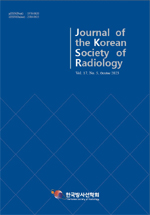
Tei Index를 이용한 경도의좌심실 이완 기능 장애 분류 모델 평가
Evaluation of Classification Models of Mild Left Ventricular Diastolic Dysfunction by Tei Index
- 한국방사선학회
- 한국방사선학회 논문지
- 제17권 제5호
- 2023.10
- 761 - 766 (6 pages)
본 논문에는 경도의 좌심실 이완 기능 장애 유무를 분류하기 위해 TI을 측정하였다. 분류에 사용된 기계학습 모델은 SVM과 KNN을 이용하였다. 총 306개의 데이터 중에서 206개는 트레이닝 데이터, 100개는 테스트 데이터로 사용하였다. 그 결과, SVM이 KNN에 비하여 비교적 높은 정확도를 보여 좌심실 이완 기능 장애 유무 진단에 더 유용함을 확인했다. 향후 연구에서 TI 뿐만 아니라 심장의 기능을 평가하는 다양한 지표들을 추가하고 더 많은 데이터를 확보한다면 분류 성능을 더 높일 수 있을 것으로 기대된다. 나아가, 타 질환의 예측 및 분류, 증가하는 검사 건수에 비해 부족한 의료 인력 문제를 해결하는데 기초 자료로 활용될 것으로 기대된다.
In this paper, TI was measured to classify the presence or absence of mild left ventricular diastolic dysfunction. Of the total 306 data, 206 were used as training data and 100 were used as test data, and the machine learning models used for classification used SVM and KNN. As a result, it was confirmed that SVM showed relatively higher accuracy than KNN and was more useful in diagnosing the presence of left ventricular diastolic dysfunction. In future research, it is expected that classification performance can be further improved by adding various indicators that evaluate not only TI but also cardiac function and securing more data. Furthermore, it is expected to be used as basic data to predict and classify other diseases and solve the problem of insufficient medical manpower compared to the increasing number of tests.
Ⅰ. INTRODUCTION
Ⅱ. MATERIAL AND METHODS
Ⅲ. RESULT
Ⅳ. DISCUSSION
Ⅴ. CONCLUSION
Acknowledgement
Reference